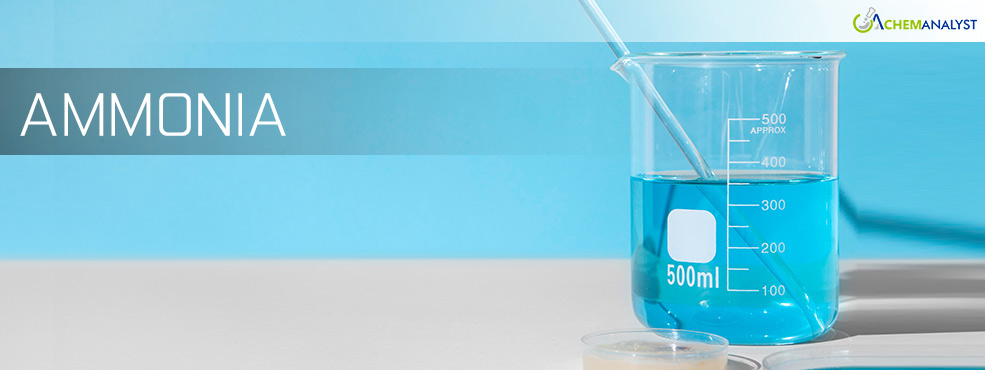Pessimism Prevails in Global Ammonia Market Reflecting Sluggish Downstream Demand
- 22-Feb-2024 4:49 PM
- Journalist: Patrick Knight
During the initial two weeks of February 2024, the worldwide Ammonia market continued to reflect a bearish sentiment, akin to the trend witnessed in January 2024. The continual decline in the cost of essential feedstock elements, specifically Natural Gas, has resulted in decreased production expenses, consequently driving down Ammonia prices. Additionally, reduced demand from key end-user fertilizer markets, coupled with persistent trade instabilities and adverse weather conditions domestically, are notable factors influencing the downward trajectory of Ammonia prices.
In the first half of February 2024, the Ammonia market in the United States was characterized by pessimism, primarily stemming from an oversupply of material within the country and subdued demand both domestically and internationally. Demand for Ammonia and its crucial derivative products, such as Urea Ammonium Nitrate (UAN), Diammonium Phosphate (DAP), and Ammonium Nitrate (AN), remained constrained in the domestic fertilizer market following the peak planting season. Additionally, demand from Brazil, a significant importer, was limited during this time due to Carnival celebrations, which traditionally result in a temporary slowdown in agricultural activities and reduced fertilizer demand. This trend is typical during the Carnival season, as agricultural workers participate in festivities, leading to decreased fertilizer demand. The situation was compounded by significant stockpiles of Ammonia within the country. During this period, manufacturing units within the country operated at a healthy rate, resulting in sufficient inventories to meet the needs of end-user markets. The intricate interplay of these factors has narrowed the gap between demand and supply, thus reinforcing the ongoing decline in prices.
Similarly, the European Ammonia market experienced bearish sentiments during February 2024. The ongoing war in the region has undeniably presented significant challenges for European farmers, leading to low demand for Ammonia and no significant upward pressure on prices within the country. Currently, peak planting season within the country has passed and purchases for Ammonia and its derivatives including Diammonium Phosphate, Urea Ammonium Nitrate and Ammonium Chloride have remained restricted. Despite this, insights from various market participants suggests that the German farmers have started seeking spring fertilizer volumes, these inquiries have not yet translated into substantial demand for Ammonia. However, domestic Ammonia production remains stable, with companies such as RivneAzot and CherkassyAzot operating their production lines as usual. Additionally, Middle Eastern producers have been fulfilling existing contracts and have not expressed interest in offering spot Ammonia on the German market.
According to ChemAnalyst, it is anticipated that Ammonia prices will continue to decrease in the upcoming days, driven by the declining prices of essential feedstock materials and subdued demand.



